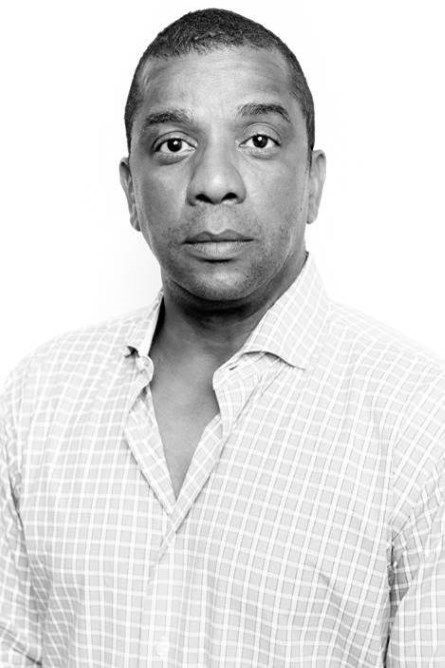Ron Carter knows the healthcare industry inside and out. Carter has worked in the medical world for a long time – specifically in the insurance field, which can be as confusing for corporations as it is for consumers. Within the many layers of health insurance, Carter focuses his talents in the pharmacy benefits manager space. A pharmacy benefits manager – or PBM for short – is a system that handles a health plan’s drug benefit program, including the management of prescription drug transactions and the processing of claims. This niche area of insurance is especially important for the often-marginalized manual labor workforce, who depend on workers’ compensation insurance to provide wage replacement and medical benefits when they get injured on the job. It is the job of the PBM to make sure these injured workers receive and utilize prescription drugs properly, so they can get back on their feet.
For Carter, helping others is the most important part of his job. At his previous company, he was proud of the stellar customer service provided to clients in the workers’ compensation space. During a merger, however, he noticed that customizable PBM options for customers were dwindling. Managing pharmacy benefits is not a one-size-fits-all solution: every insurance company, third party administrator, or self-insured employer needs different functions for different needs. The industry seemed to fail to offer customizable solutions for each customer.
That’s when Carter and Pete Shearer, Carter’s business partner and the CTO of RxBridge, decided to create their own solution: RxBridge. Their goal was to build the most intelligent PBM in the market. As an entrepreneur, Carter wanted to generate positive change in the insurance industry by taking a more person-centric approach to pharmacy benefits management. In order to provide a new, viable alternative to big-box PBMs, Carter dedicated himself to creating an innovative, transparent solution that relies on both human touch and technology for the ideal balance. Excellent customer service and customization are at the core of what RxBridge does, and have proven to be successful path: RxBridge has earned all-star organizations, such as NFL and NBA teams in addition to nationwide retailers and national TPAs, as clients.
Outside of insurance, Carter’s values can be applied to almost any industry; companies who want a fighting chance against the status quo must provide flexible, unique solutions in order to gain attention against larger industry players. Take a page from RxBridge’s book by listening to your employees and clients, allowing them to inspire you. When you collaborate with potential customers on what they truly need, you’ll win more business thanks to this customer-centric approach.
We sat down with Carter to learn more about his career path, his role with RxBridge, and his values.

What is your “backstory”?
Before helping to launch RxBridge as the CEO, I worked in the medical field for a long time; most recently, I worked for a great workers’ compensation PBM that was focused on stellar customer service. At the PBM, an M&A rollup occurred and the customers lost a lot of options. For example, if you were a TPA looking for white-glove customer service and required customizations, your choices were severely limited. If you were a self-insured self-administered employer and your process was uniquely different from the “fill and bill” model you were forced to fit your “square peg” into a “round hole”. So our response was simple – to create RxBridge and provide a ridiculous amount of customer service and an unprecedented degree of collaboration to the customer that strongly desired that value proposition.
Can you share the funniest or most interesting story that happened to you since you began leading your company?
There is a lot of travel required to see to customers and prospects as a part of what we do – and that is not always so straightforward as it may seem. Once, I had a tire blow out after hitting a pothole on the road when I was about 10 minutes away from a client. The choices were limited and I ended up Ubering to the client meeting and back to my car. The Uber driver had a relative that worked in the car business and went so far as to put me in touch with them. By the time I finished my meeting and got back to my car, I was met there with a tow truck. The customer never knew and the story remains a memorable moment in our mission to deliver excellent customer service to our customers.
What do you think makes your company stand out? Can you share a story?
This is an exciting time for the workers’ compensation industry, and the insurance industry as a whole. We are seeing a definitive shift from “status quo” and “reluctance to change” and the “good old boy” network to aggressive management of claims and intelligent management of claims. We are seeing phrases like “value proposition” and “total cost of ownership” define a new way of doing business. As the only designer PBM in this space, RxBridge competes against Big Box PBMs. As a company, we face the sheer enormity of their size and dominance. It is that “customer focused flexibility” that sets us apart; we custom-fit to the customer’s requirements as opposed to forcing the customer to fit to ours. There are countless examples of where we have collaborated with a client and delivered to production capabilities that don’t exist anywhere else in the business. We start our conversations with clients at the whiteboard as opposed to hiding behind PowerPoint presentations because our job is to listen more than we talk. When we listen, we start delivering from day one a value to our customers.
Are you working on any new or exciting projects now?
We are working on many different fronts to bring new competencies to the industry. Honestly, all of our projects are inspired by our customers, designed in collaboration with our customers, and built for our customers. We have really smart and insightful customers who know what they need but rarely have a PBM willing to listen and collaborate with them. It is exciting to get up and go to work every morning and learn everyday from these thought leaders in the industry.
What advice would you give to other CEOs or founders to help their employees to thrive?
Far be it from me to even be able to give advice. All I can do is pass on what my mentors have given to me. And I guess that’s the first thing – I was told to get some “been there done that” mentors and listen to them. They are not in the forest, so to speak, and maintain a completely different perspective on business scenarios, trends, and metrics that reveal more about the business than I see on a daily basis. Additionally, the best results I have seen have been from following the direction of another mentor who told me to spend all of my time on my customers and employees. Everything else is 5th place. Other than that I try to follow the “well read” direction and immerse myself in exploring the thought leadership of others surrounding culture, productivity, A Players versus B Players, and a host of other topics.
How have you used your success to bring goodness to the world?
There are a number of causes that have captured my passion. I sit on a couple of boards of organizations that are committed to helping inner city kids and kids who won’t have the opportunities that I took for granted growing up. To give back is not a “nice thing to do” but a mandatory requirement of living as it is what I believe I was put here to do.
Can you share a top lesson that you have learned from your experience as a person of color in tech?
You can’t assume intent so you have a choice – believe the best in people or believe the worst. Unless you have hard evidence, there really is no good way to understand the intent of a person. When I was younger I blamed everything on racism. What I know today is you can not assume a person’s actions are driven by bias. Moreover, it is typically more driven by an individual’s internal fears and insecurities and it’s very rarely “about me”.
Lastly, what is your favorite “Life Lesson Quote”?
I have many. One of my favorites among many others: “Culture eats strategy for lunch.”


